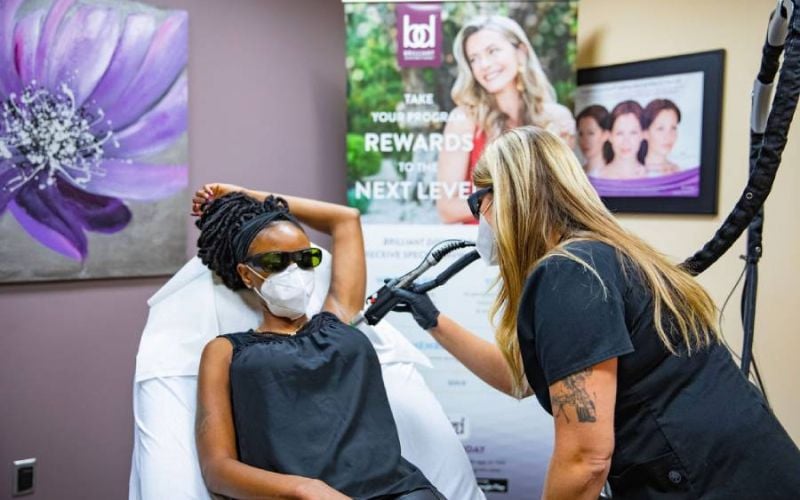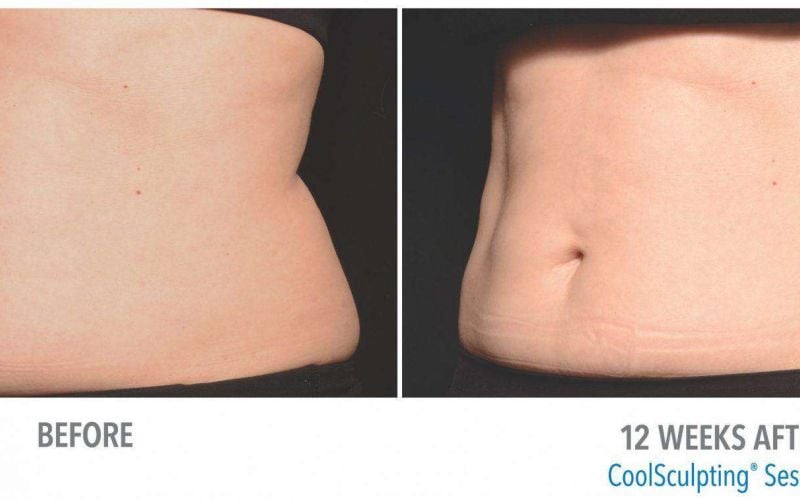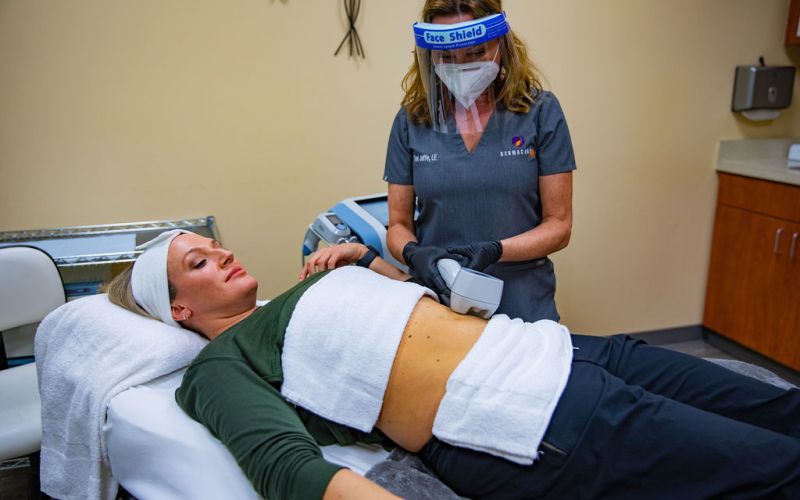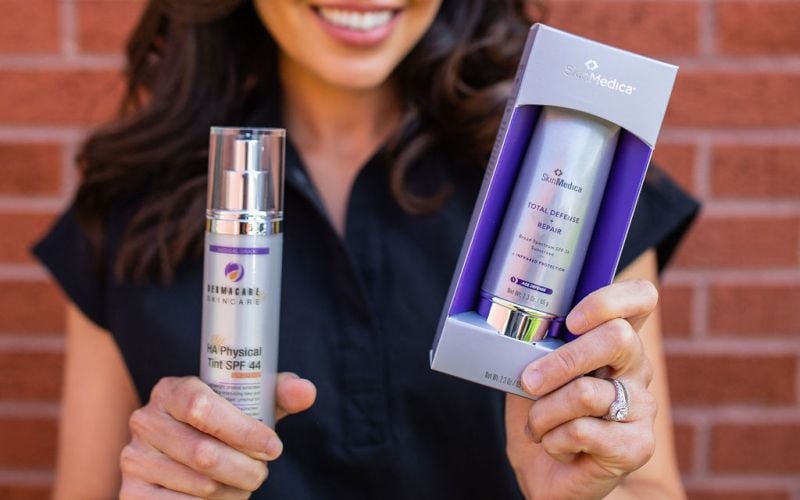Initial consultations are always free of charge, and our Dermacare Difference Program allows you to save on our services and products
How to Know if Your Filler is in the Wrong Spot
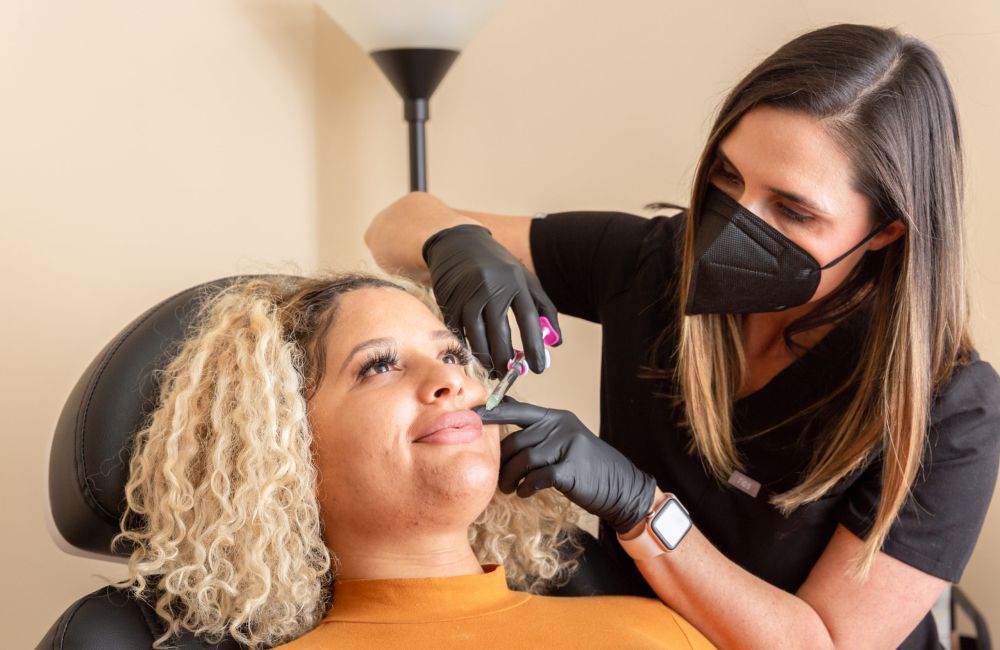

Dermal fillers and BOTOX® injections are two of the most popular cosmetic procedures in the U.S.—and for good reason. They yield beautiful, lasting results with minimal recovery times. With that being said, no cosmetic procedure has zero risk. (Just check out our recent blog on “bad” BOTOX®.) Immune responses and injection techniques can result in unwanted side effects such as filler migration. Today we’re sharing how to know if your filler is in the wrong spot and what you can do about it.
What is filler migration?
Filler migration happens when dermal filler is injected in one area but moves to another. This is most notably seen in the lips and cheeks. Fillers can move up or down, left or right, and even extend outward as a “bump” under the skin’s surface.
What causes filler migration?
There are a few known causes of filler migration, starting with an immune response that may occur in a small percentage of patients. If you’ve recently experienced:
- an illness
- an allergic reaction
- any vaccines in the last two weeks
- a dental cleaning within the last two weeks
you’re at an elevated risk of experiencing moderate to severe swelling in any of the areas where the filler is going to be injected.
A good injector will not administer filler if you’ve experienced any of the above in the two weeks prior to your appointment. They will also tell you not to get a vaccine or (in the case of lip filler) visit the dentist in the two weeks following your filler appointment.
A good injector will also get a complete medical history to determine if you are at risk for developing an immune response.
Other causes of filler migration include:
- poor injection technique
- choosing the wrong filler for the area
- injecting too much altogether
- you’re prone to filler migration
How do you prevent filler from migrating?
#1 – Choosing the right injector is crucial to the success and safety of your treatment. A good injector will know the latest techniques to achieve the results you want. They will also know which techniques tend to result in filler migration and which don’t.
Here are a few things to look for when choosing an injector:
- Qualifications – Your injector should be a medical professional with proper training and experience using various fillers.
- Full Transparency – A great injector will go over your complete medical history to determine which products are best for you. They will also disclose any risks associated with your treatment.
- References/Testimonials – If you don’t have a family member or friend to refer you, look for testimonials on your chosen injectors’ website, social media, and Google My Business page!
#2 – Be honest with your injector. If you’ve had filler injected previously, especially in the area you want to have treated now, your injector needs to know. It’s also incredibly helpful to know what kind of filler was previously used, how long ago, and how much (if possible). All this can help your injector choose the right filler to avoid migration and give you the results you want!
#3 – Follow the post-care instructions. After you get filler, it is still pliable for up to two weeks post treatment. One of the post-care instructions when receiving filler to the lips is to avoid drinking with a straw since making the o-shape with your mouth can push filler beyond the lip lines. Trust us when we say a good injector can always tell when a patient comes in with filler migration from using a straw. (You have been warned!)
#4 – Dissolve your existing filler. This sounds scary, right? But sometimes, the best way to prevent filler migration is to dissolve the old filler and then start fresh! A good injector will let you know if this is the best option for you.
#5 – Some people are just prone to migration. There we said it. Everyone’s anatomy and reactions to substances are different. Sometimes, for some people, filler looks great for a few weeks/months and then BOOM, it migrates. Some people are just prone to it and there is nothing they could have done differently to prevent it. If this is the case for you, don’t be shy or embarrassed! Let your injector know. A good injector will have a whole arsenal of solutions and techniques to help prevent and manage filler migration.
If your filler has migrated…
If you suspect that your filler has migrated, don’t panic! Make an appointment with your injector and let them know what’s happening. A good injector will be more than happy to help, and will address any concerns you may have.
If you are more prone to filler migration, your injector will also be able to modify their technique or suggest different operations available to you. It’s also important to note that the hyaluronic acid (HA)-based fillers can be easily dissolved. So if you have a bad experience with an injector, or are just prone to filler migration, we can help resolve the issue and get you back on the right track as quickly as possible. (We should note that only HA-based fillers can be dissolved. For this reason, we recommend selecting an injector who uses HA-based fillers. That way if it migrates, the problem can be corrected. If your non-HA filler has migrated, we still recommend choosing an injector you trust and talking to them about your options.)
If you have a question or would like to talk to one of our medical injectors about filler, you can call our office at 757-547-7546 or book a free, no-pressure consultation here!
What Our
Clients Say
From skin restoration to stubborn fat removal, we’ve helped thousands of men and women feel more beautiful and confident.
-
I love going to Dermacare! I live an hour from the office but I make time to go. I used to have no idea what was best for my skin care. It was pretty intimidating with how many options and ads I wo…– Lucia G.
-
I only went by to get products that I usually have to get online. But when I got there, they had the aesthetician speak with me and give me samples of what she recommended and to compare that to se…– Kimberly J.
-
Love my time at Dermacare. I’ve been a client for 5+ years. Go once a month and always get great treatments from Tina. The staff is very professional and always greet me with warmth and enthusiasm….– Linda H.
-
The staff at Dermacare is amazing! Thank you ladies for being so friendly and professional. Your skills are amazing! You keep me looking good.– Doretha H.
-
Very clean, very professional, and super friendly. Not pretentious at all. I just think some aesthetics practices can come off cold or arrogant, but not these folks. The staff is very knowledgeable…– Angela S.
-
I absolutely love Dermacare of Hampton Roads. The staff is always friendly and they are all very knowledgeable. I never feel as though I’m trying to be “sold” something I don’t need or want. The environment is…– Amber M.
-
After being a client for more than 8 years, I have nothing but accolades for Dermacare of Hampton Roads.. What initially drew me to Dermacare was the fact that it was medically supervised by a doctor, extremel…– Kathryn C.
-
If you’re looking for the right medspa for you, don’t look any further. My experience with Dermacare has been nothing short of exceptional. From the very first day of my consultation, the customer …– Natalie O.
-
I had a great experience with Lauren with microneedling with the Vivace machine today. It was a great experience and my first time with the machine. She was very professional and full of knowledge …– Dea W.
-
I came across this place on Instagram. I decided to schedule a consultation with them which was done over video chat and was very convenient. The consultation was also free. I met with a nurse who …– Vi R.
Learning Center
Dermacare Membership Plans

With cellular turnover approximately every 28 days, a Dermacare Membership is the best way to keep your skin vibrant and healthy.
Our members enjoy monthly aesthetic services and laser treatments, in addition to discounts on injectables, packages, and our medical-grade skincare products.



